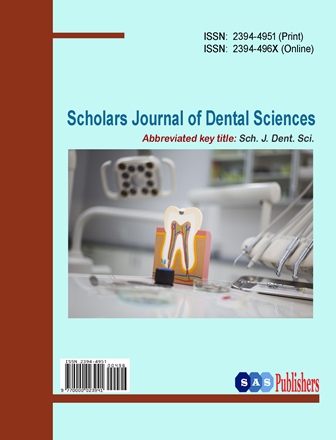+91-9365665504
+91-8724002629
submit@saspublishers.com / saspjournals@gmail.com

An International Publisher for Academic and Scientific Journals
Author Login
Scholars Journal of Dental Sciences
Journal Home
Description
Editorial Board
Archives
Indexing
Statistics
Title : Scholars Journal of Dental Sciences
Abbr : Sch J Dent Sci
ISSN (Online) : 2394-496X
ISSN (Print) : 2394-4951
Discipline : Dentistry
Frequency : Monthly
Country : India
Language : English
Abbr : Sch J Dent Sci
ISSN (Online) : 2394-496X
ISSN (Print) : 2394-4951
Discipline : Dentistry
Frequency : Monthly
Country : India
Language : English
10.36347/sjds
DOI
DOI
4.3
IMPACT FACTOR
IMPACT FACTOR
Current Issue : Volume-12 - Issue-10 ; 2025
Recently Published Articles
Nov. 7, 2025 | Case Report
Resin infiltration for Molar-Incisor Hypomineralization: A 35-Month Follow-up Case Report
Dr. H. Bendekiche Hanane, Chafika Mehdid
Sch J Dent Sci | 157-161
DOI : https://doi.org/10.36347/sjds.2025.v12i10.003
Nov. 6, 2025 | Review Article
Impression Techniques for Class I or Semi complete Denture
Hadeel Mazin Akram, Alaa Abdulsattar Jassim, Doha Hussein Manati
Sch J Dent Sci | 152-156
DOI : https://doi.org/10.36347/sjds.2025.v12i10.002
Nov. 5, 2025 | Review Article
Timing of Treatment for Class II Division one Malocclusion for Growing Patient with Myofunctional Appliances
Alaa Abdulsattar Jassim, Hadeel Mazin Akram
Sch J Dent Sci | 146-151
DOI : https://doi.org/10.36347/sjds.2025.v12i10.001





